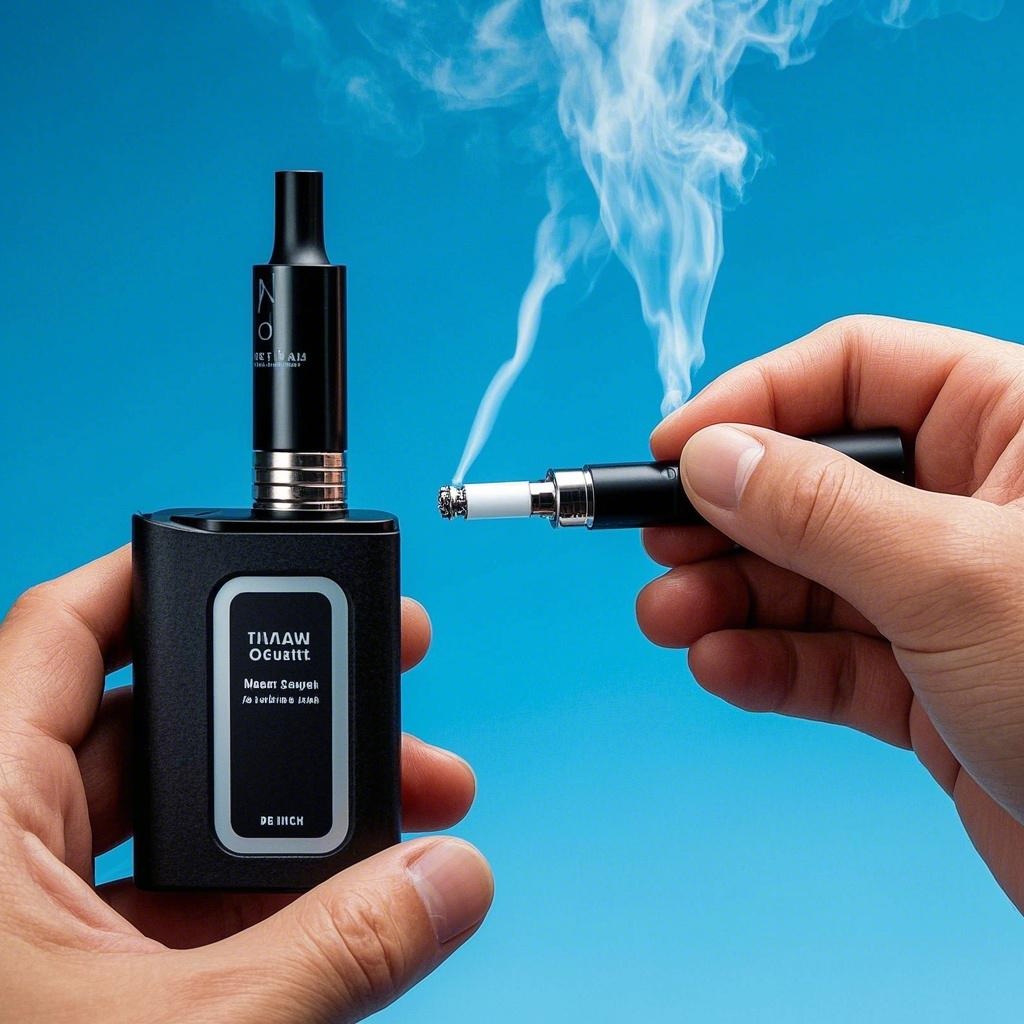E-cigarettes have gained significant popularity in recent years as an alternative to traditional smoking, but many still wonder: Do e-cigarettes contain tobacco? Unlike conventional cigarettes that rely on tobacco for their nicotine content, e-cigarettes use a liquid form known as e-liquid or vape juice. This e-liquid often contains nicotine, flavorings, and other chemicals, but it doesn’t include the tobacco leaf found in traditional cigarettes. In this article, we’ll explore the key differences between e-cigarettes and traditional cigarettes, and address common questions about nicotine, safety, and usage. Let’s dive into the facts to clear up the confusion.
Do E-Cigarettes Contain Tobacco?
E-cigarettes do not contain traditional tobacco. Instead of using tobacco leaves or direct tobacco extracts, e-cigarettes utilize e-liquid (also known as vape juice), which typically contains nicotine, flavorings, and other chemicals. While the nicotine in e-cigarettes often comes from tobacco plants, the form is quite different.
Here’s a breakdown to clarify the differences:
| Traditional Cigarettes | E-Cigarettes |
|---|---|
| Contain dried tobacco leaves | Contain e-liquid (nicotine + flavorings) |
| Nicotine is absorbed by burning tobacco | Nicotine is absorbed by inhaling vapor |
| Combustion creates harmful chemicals like tar and carbon monoxide | Heating e-liquid creates vapor with fewer harmful chemicals |
Although both traditional cigarettes and e-cigarettes can deliver nicotine to the user, the key difference lies in the method of nicotine delivery and the absence of combustion in e-cigarettes. In the next sections, we’ll further explore these distinctions, focusing on the impact of nicotine, safety concerns, and usage.
What Is the Difference Between E-Cigarettes and Traditional Cigarettes?
The primary difference between e-cigarettes and traditional cigarettes lies in their heating method. Traditional cigarettes burn tobacco to produce smoke, while e-cigarettes heat e-liquid (also known as vape juice) to generate vapor. This heating process eliminates combustion, which is a major source of harmful chemicals in traditional cigarette smoke.
Let’s compare the two:
| Feature | Traditional Cigarettes | E-Cigarettes |
|---|---|---|
| Heating Method | Burns tobacco to create smoke | Heats e-liquid to create vapor |
| Chemical Composition | Releases harmful chemicals like tar, carbon monoxide, and other toxins | Fewer harmful chemicals, mainly nicotine and flavorings |
| Byproducts | Smoke containing tar and carcinogens | Vapor containing minimal toxins |
| Health Impact | Associated with various cancers, respiratory diseases, and heart problems | Considered less harmful but still under research regarding long-term effects |
By avoiding combustion, e-cigarettes significantly reduce the production of harmful substances such as tar and carbon monoxide, which are commonly found in traditional cigarette smoke. This makes e-cigarettes a less harmful alternative, although not entirely risk-free. Let’s dive deeper into the potential health risks and safety concerns related to e-cigarette use in the next section.
Do E-Cigarettes Contain Nicotine?
Yes, most e-liquids used in e-cigarettes contain nicotine, which is one of the main reasons why many smokers turn to e-cigarettes as an alternative. Nicotine is a highly addictive substance that creates a pleasurable sensation when inhaled, making it an important factor in the smoking experience. For those trying to quit smoking, e-cigarettes provide a way to gradually reduce nicotine dependence by offering e-liquids with varying nicotine strengths.
Here’s a breakdown of nicotine content in e-cigarettes:
| Nicotine Strength | Common e-Liquid Options |
|---|---|
| High (18-24mg/ml) | Suitable for heavy smokers |
| Medium (12-18mg/ml) | Ideal for moderate smokers |
| Low (3-6mg/ml) | Best for light smokers or those reducing nicotine intake |
| Nicotine-Free | Available for non-smokers or those who have quit nicotine |
However, it’s important to note that e-cigarettes are available with nicotine-free e-liquids as well. These options provide a smoking experience without the addictive substance, catering to those who want to enjoy the act of vaping without nicotine.
In the next section, we will examine whether e-cigarettes are safer than traditional cigarettes and what health risks may still exist.
Are E-Cigarettes Safer Than Traditional Cigarettes?
While e-cigarettes are generally considered to produce fewer harmful substances than traditional cigarettes, the long-term health effects are still being researched. E-cigarettes do not produce harmful tar and carbon monoxide, which are byproducts of tobacco combustion. However, they still contain nicotine, a highly addictive substance that can pose health risks.
Let’s compare the safety aspects:
| Health Risk | Traditional Cigarettes | E-Cigarettes |
|---|---|---|
| Tar | Contains harmful tar from burning tobacco | No tar, as there is no combustion involved |
| Carbon Monoxide | Produced from burning tobacco | No carbon monoxide production |
| Nicotine | Present, causing addiction and potential cardiovascular issues | Present, causing addiction, potential cardiovascular risks |
| Other Harmful Chemicals | Contains over 7,000 chemicals, many of which are toxic or carcinogenic | Contains fewer chemicals, but still poses some health risks due to additives and flavorings |
| Cancer Risk | High risk of cancer (lung, mouth, throat) | Lower cancer risk, though not risk-free |
While e-cigarettes are less harmful than traditional smoking, they are not without risk. The nicotine they contain can lead to addiction and may affect cardiovascular health. Additionally, the long-term impact of inhaling vaporized e-liquid ingredients is still being studied.
In the final section, we will discuss who should or shouldn’t use e-cigarettes and provide guidance on safe usage.
Is E-Cigarette Use Suitable for Everyone?
E-cigarettes are primarily designed for smokers who want to gradually reduce their nicotine dependence as part of a smoking cessation strategy. For those who have never smoked, particularly teenagers and pregnant women, using e-cigarettes may pose unnecessary health risks. While e-cigarettes are considered a safer alternative to traditional smoking, they still contain nicotine and other substances that may have adverse effects on non-smokers.
Here’s a breakdown of who should or shouldn’t use e-cigarettes:
| Group | Suitability for E-Cigarette Use | Potential Risks |
|---|---|---|
| Smokers | Suitable, especially for those trying to quit | Nicotine dependence, potential health risks if long-term use is continued |
| Non-Smokers | Not recommended | Risk of developing nicotine addiction, potential harm to cardiovascular health |
| Teenagers | Should avoid e-cigarettes | Risk of nicotine addiction, brain development issues |
| Pregnant Women | Not recommended | Risk to fetal development, potential harm to baby’s health |
| People with Heart Conditions | Should consult a doctor before use | Nicotine can increase heart rate and blood pressure, worsening existing conditions |
While e-cigarettes may help some smokers quit, they are not intended for non-smokers or vulnerable groups such as teenagers and pregnant women. For those considering e-cigarette use as part of a smoking cessation plan, it is always recommended to consult a healthcare provider.
In conclusion, while e-cigarettes offer an alternative for smokers looking to quit, they are not suitable for everyone. Understanding the risks and benefits is key to making an informed decision about their use.






